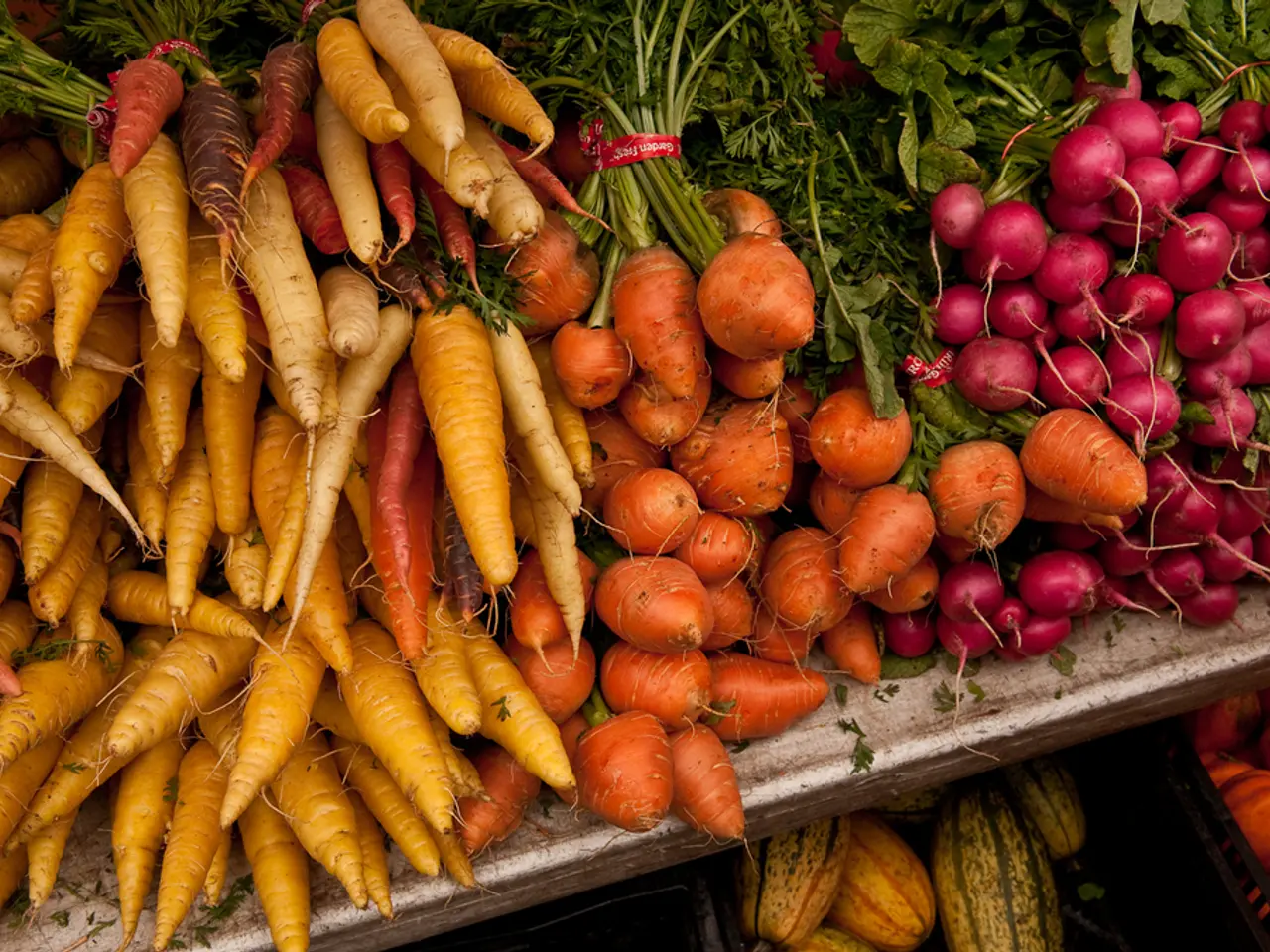Essential Guidelines for First-Timers in Cultivating Vegetables in their Own Backyard
In the spirit of cultivating a thriving vegetable garden, here are some essential factors to consider before embarking on your green-fingered adventure.
First and foremost, sunlight exposure is a crucial aspect to take into account. Most vegetables require 6-8 hours of direct sunlight per day for optimal growth. To ensure your garden thrives, observe your location's sun patterns carefully.
Soil quality is another vital element. A well-draining soil rich in organic matter is essential for a healthy garden. Conduct a soil test to check pH and nutrient levels, which will help you amend the soil appropriately. Remember, healthy soil is home to beneficial microbes and worms that support plant growth.
Understanding your local climate and seasonality is essential for planning your plantings. Familiarise yourself with your frost dates and growing season length to avoid cold damage and select suitable crops.
Watering needs must also be considered. Ensure consistent moisture but avoid overwatering. Installing efficient watering systems like drip irrigation or soaker hoses can be beneficial for maintaining a balanced water supply.
Space requirements and growth habits of plants should be taken into account when planning your garden layout. Some plants need more room to sprawl while others grow vertically. Group plants by sunlight and water needs for easier management.
Planning your garden on paper first is highly recommended. Consider using borders or raised beds and consider staggering plantings for year-round harvest. Interplanting can help with pest control but requires careful management.
Prepare for your garden with the right tools and infrastructure. Invest in proper tools for soil preparation, planting, maintenance, and harvesting, such as shovels, trowels, pruning shears, watering devices, and fencing if needed.
Avoid common pitfalls such as starting too big, poor location choice, neglecting soil quality, and improper planting timing.
Zucchini and all types of summer squash are ideal for new gardeners. They can be grown in containers or in-ground and are known for bearing a lot of fruits. Green beans are another easy-to-grow option, available in various varieties, including climbing plants and bush types.
Soil pH should be checked and adjusted according to the types of vegetables to be grown. Carrots thrive in both sunny and semi-shady environments and can grow in less than ideal soil conditions. Cucumbers are best grown in warm, sunny spots and are known for bearing a lot of fruits.
Tomatoes are easy to grow and require minimal maintenance, making them ideal for new gardeners. They can be grown in various environments, including small gardens, container gardens, and vertical gardens.
Lettuce matures every 3 to 4 weeks and can provide a steady supply of greens all season long. Radishes are easy to grow from seed and add a delectable crunch to salads and soups. Swiss chard is a dark, green leafy vegetable that grows easily and beautifully, ideal for container gardening.
Remember, most vegetables need at least 6 hours of sunlight every day, but some thrive in shady environments. Warm season vegetables cannot tolerate frost, while cool season vegetables can survive light frosts.
Lastly, consider the weather, growing conditions, pest problems, and amendments when choosing the vegetables to plant. Basil is a fast-growing herb that pairs well with tomato plants and keeps pests away.
With these factors in mind, you're well on your way to creating a productive and manageable vegetable garden tailored to your environment and preferences. Happy gardening!
References: [1] Gardening Know How [2] The Spruce [3] BBC Gardeners' World [4] National Gardening Association [5] Garden Myths
In the planning stages of your garden, consider the 'space requirements and growth habits' of plants when arranging your garden layout. Some vegetables, such as tomatoes and zucchini, require ample space to grow optimally, while others, like lettuce and radishes, are suitable for smaller spaces or containers.
Beyond physical space, understanding the 'climate and seasonality' of your location is essential for selecting suitable crops and timing your plantings accordingly. For instance, warm season vegetables like cucumbers thrive in sunny, warm environments, while cool season vegetables like carrots can tolerate less ideal growing conditions.




